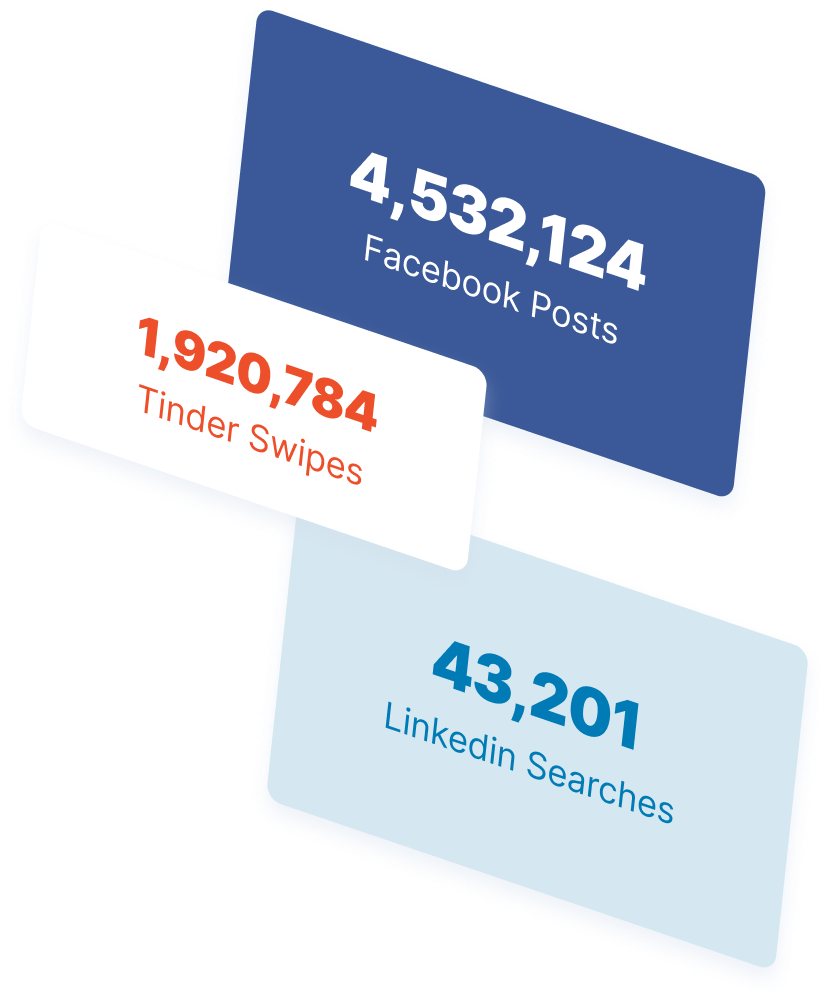-
 7 min. read
7 min. read
-
 WebFX Team
WebFX Team Digital Marketing Agency
Digital Marketing Agency
- The WebFX team is made up of more than 450 subject matter experts in digital marketing, SEO, web design and web development, social media, and more. Together, they’ve helped WebFX’s clients earn more than $3 billion in revenue from the web — and that’s just in the past five years. @webfx
Our InterviewFX series rolls on! These interviews offer business owners and marketers important insight, advice, and ideas that will help grow their online presence and become more successful at what they do. To see past interviews, visit this page or click the “InterviewFX” button in our sidebar.
Today we interview internationally renowned speaker and author Liz Jazwiec. Liz’s books include “Eat That Cookie,” “Hey Cupcake! We Are All Leaders,” and her most recent, “Service Excellence is as Easy as P.I.E.
(Perception is Everything).” Check out her advice on finding your internal customer, making client relationships personal, and what NOT to do when you have customers who are a little bit… well, crazy.
1. What’s one small change a manager or business owner can make that can have a big impact on everyone in the organization?
Acknowledging or recognizing things that are done right. Recognized behaviors get repeated. If you see someone who’s done a great job with a customer, you could say “Hey, I just saw you did a great job with that customer, thanks so much for what you do, etc.” We sometimes tend to try and focus on everything that’s going wrong.
I always tell people when they start to try to the things that are going well. Even if you’re initiating a new program, focus on the people who adapt to it first before trying to get the people who aren’t on board. If we were in a business, you were in the next cubical, I was your boss, and I went over to your co-worker and said “Jane, that report was spot on.
I love the way you put it into bullet points; that makes it so much easier. Thanks for having the attention to detail.” First of all if you’re Jane you’re going to feel good about your work. But if YOU hear that, unless you’re an idiot, you’re going to start to understand how to do things better as well.
2. What makes for a sustainable client/customer relationship?
 It has to be a personal connection. A lot of people think that “wow” is something that maybe happens once a year and is a great big deal, but really when I ask people “what’s the best service you’ve ever had?” all of it is tiny, and all of it is deeply, deeply personal. It’s that personal connection.
It has to be a personal connection. A lot of people think that “wow” is something that maybe happens once a year and is a great big deal, but really when I ask people “what’s the best service you’ve ever had?” all of it is tiny, and all of it is deeply, deeply personal. It’s that personal connection.
I know in [my newest book] I mention a hotel that takes a look at your luggage tag and radios it to the desk so when you walk up they say “Hi Ms. Jazwiec, we’ve been expecting you.” All those little personal things make a big difference. I go to the guy who does my hair and he asks about my mom being sick or he remembers I like a certain creamer, which makes for a great relationship.
Personal does not have to be individual. I was in a hotel and when I got there they had a big kids construction dump truck loaded with earplugs. There was a sign that said “we’re having construction across the street.
Sometimes they start early, please help yourselves to the earplugs.” It was a very personal thing but didn’t have to be individualized.
3. How can employees who don’t interact with customers still practice good customer service?
They have to identify their internal customers. To me a customer is anyone who receives information, product, or services. For example, I worked with an organization where the IT department realized that everyone working in the call center was dealing with the customers.
So every week one person from IT would spend an hour cleaning the call center keyboards and doing nice things like that. They got to build a personal relationship and get some face-to-face time instead of just being someone at a help desk. The hardest part is identifying the internal customers.
For HR, all the other employees are their customers. Back when I was at Holy Cross we had a guy in payroll, and this was when we were using handwritten sheets. There were corrections that would come through and needed to be fixed that day, and that made him upset that people weren’t filling the forms out right.
What he didn’t understand was that if a nurse’s paycheck is short $100, she’s not spending the day worrying about patients, she’s worrying about her paycheck. Unfortunately, he never figured out that he was serving the team and the team wasn’t serving him.
4. What do you think of the phrase “the customer is always right?”
I think that about 10% of the people we take care of are crazy. In any industry, I think that 10% of the customers are not right. The problem is that we start treating the other 90% like we want to treat that first 10%.
 I think we do need to treat the customer like they’re right unless it’s abusive. If it’s abusive nobody has to tolerate that. In healthcare, there are times when family members are very far from being “right” but you have to take into consideration that they’re not acting at their best due to stress.
I think we do need to treat the customer like they’re right unless it’s abusive. If it’s abusive nobody has to tolerate that. In healthcare, there are times when family members are very far from being “right” but you have to take into consideration that they’re not acting at their best due to stress.
When I teach service I tell people that the strategies I give only work around 90% of the time, because the other 10% of people are nuts and nothing’s going to work on them. But what happens most of the time is people will try it a tactic once or twice, then run into someone who’s a little bit off, and then say it doesn’t work and give up. We need to focus on those folks who are the 90% and not build crazy policies around the others.
In a lot of organizations, policies are built around the 10%, whether it’s a return policy or something else. I’ve done patient satisfaction surveys and sometimes we do very very well, but there’s still going to be a few people who are ranking us a 1 (out of 5). I remember having a discussion saying “we have to get rid of those 1’s!” but you can’t, those are the crazy people.
You have to take those 4’s and move them to 5’s. Once you discover that there’s always going to be those few people you can’t please and you stop trying to change everything to make them happy, things are a lot easier. If you have outstanding customer service and one crazy person complains so you decide to completely change everything you were doing, that can devastate the team, especially when the team wasn’t at fault.
5. When people read your new book, “Service Excellence is as easy as P.I.E. (Perception Is Everything),” what surprises them the most?
That service excellence is easy and doesn’t take extra money, time, or people. I think that’s surprising.
I think the “wow” part is very surprising as well. If you think about that “wow” is not big, it’s personal, then you can understand that it doesn’t take a lot of time, money, or people. I’ve been in a lot of organizations that try to make it extremely difficult.
It’s just service. You don’t need tons of Venn diagrams and analysis. You don’t have to do all that, you can make it simple.
 Liz Jazwiec, R.N. is a internationally renowned speaker, strategist and author who has shared her passion for leadership, engagement and service with audiences across all industries. She is the award winning author of the bestselling books “Eat THAT Cookie!,” “Hey Cupcake!
Liz Jazwiec, R.N. is a internationally renowned speaker, strategist and author who has shared her passion for leadership, engagement and service with audiences across all industries. She is the award winning author of the bestselling books “Eat THAT Cookie!,” “Hey Cupcake!
We Are ALL Leaders,” and “Service Excellence is as Easy as P.I.E. (Perception Is Everything).”
-
 The WebFX team is made up of more than 450 subject matter experts in digital marketing, SEO, web design and web development, social media, and more. Together, they’ve helped WebFX’s clients earn more than $3 billion in revenue from the web — and that’s just in the past five years.@webfx
The WebFX team is made up of more than 450 subject matter experts in digital marketing, SEO, web design and web development, social media, and more. Together, they’ve helped WebFX’s clients earn more than $3 billion in revenue from the web — and that’s just in the past five years.@webfx -

WebFX is a full-service marketing agency with 1,100+ client reviews and a 4.9-star rating on Clutch! Find out how our expert team and revenue-accelerating tech can drive results for you! Learn more
The Internet in Real Time
Ever wonder how much is going on at once on the Internet? It can be tough to wrap your mind around it, but we’ve put together a nice visual that’ll help! The numbers show no sign of slowing down either.
Find out More

Ready to Drive Results for Your Business?
See how WebFX uses SEO, PPC, Social Media, and Web Design to Drive Revenue for Businesses.
Get InspiredThe Internet in Real Time
Ever wonder how much is going on at once on the Internet? It can be tough to wrap your mind around it, but we’ve put together a nice visual that’ll help! The numbers show no sign of slowing down either.
Find out More





